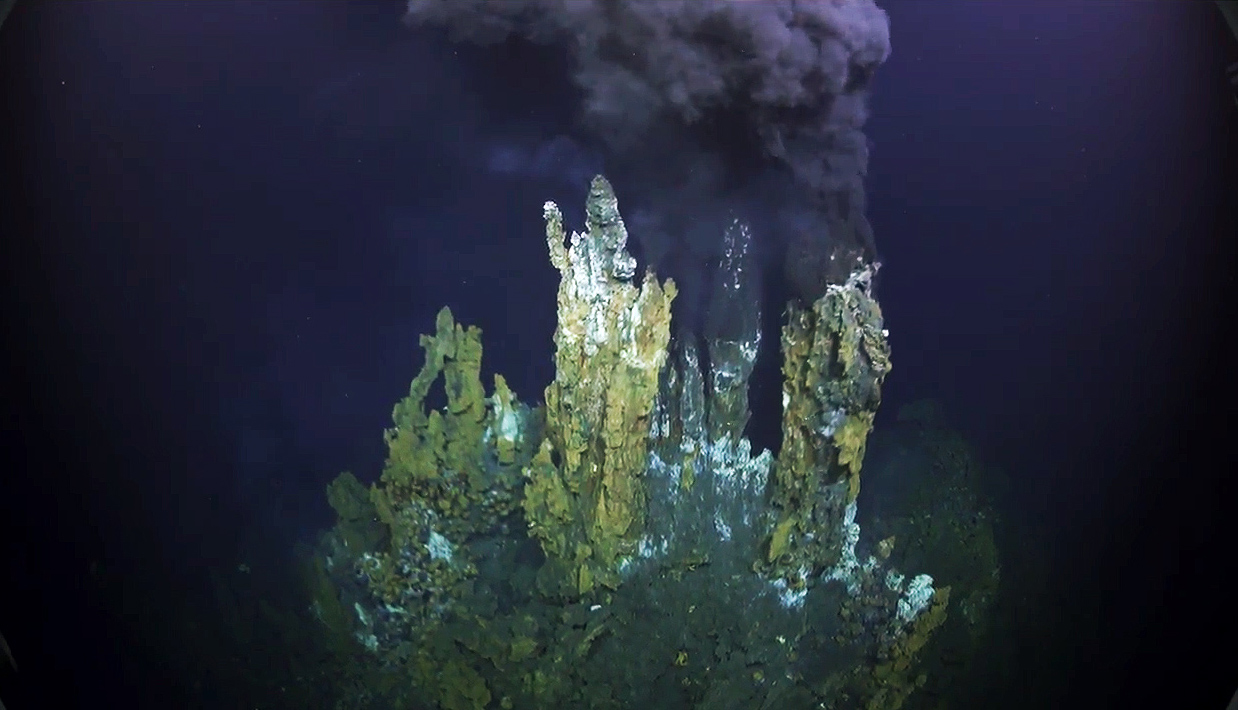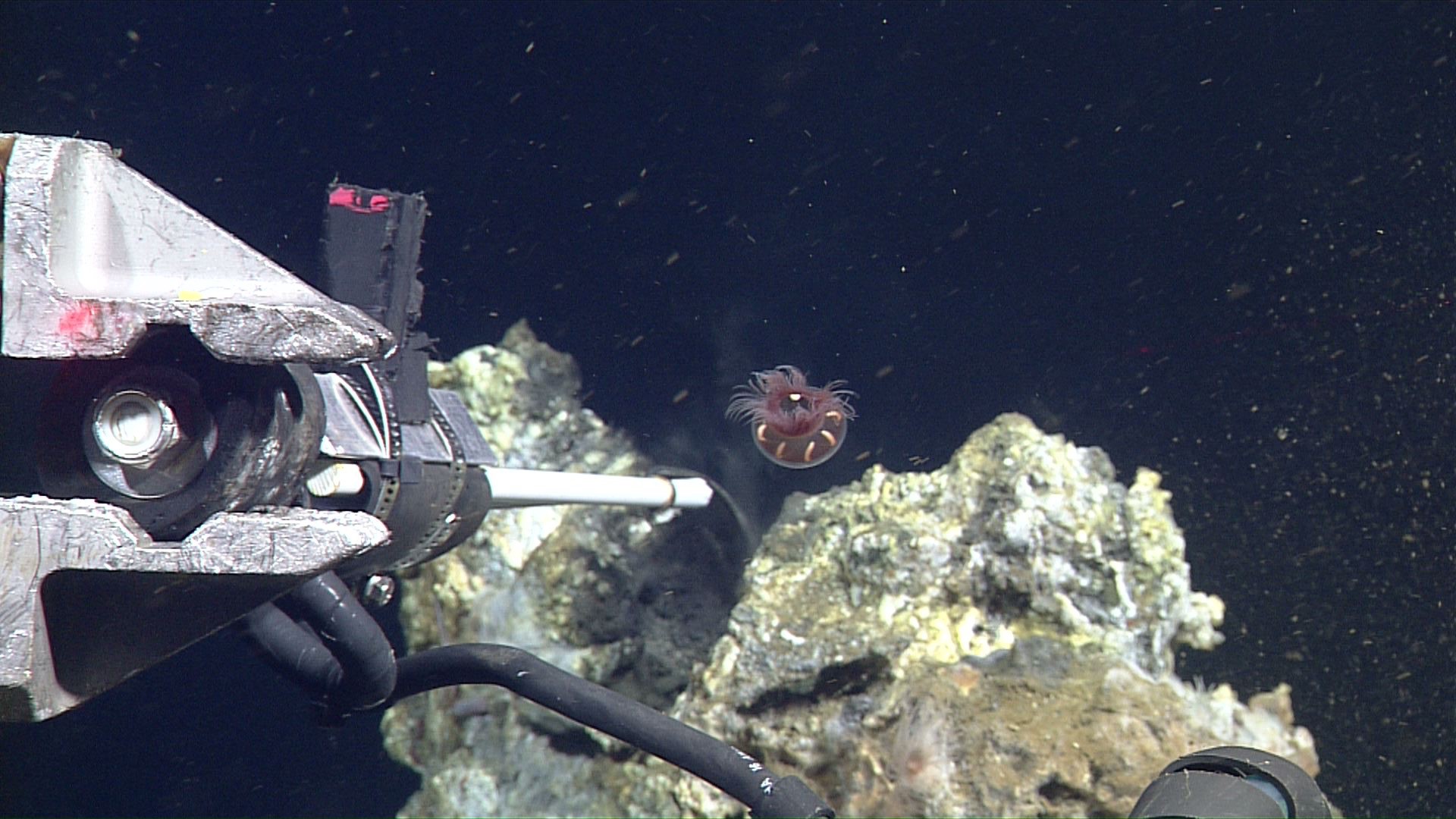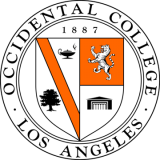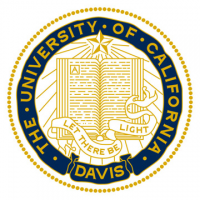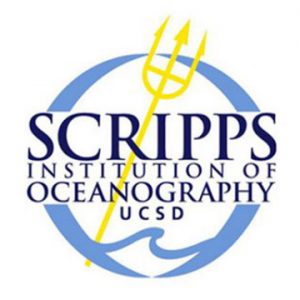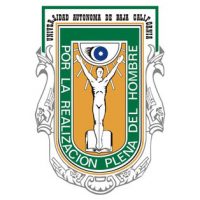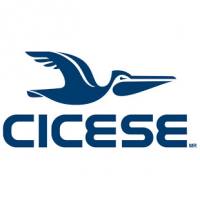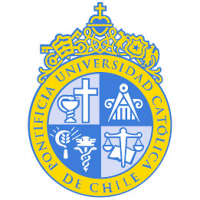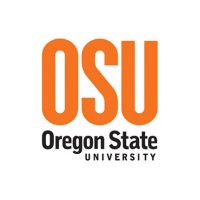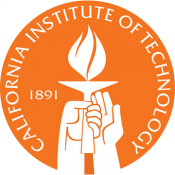Scientists are always interested where hydrothermal vents are located. However, when a new field is discovered with properties not previously seen, the excitement reaches a whole new level. This occurred during a 2015 Monterey Bay Aquarium Research Institute (MBARI) expedition in the Gulf of California, when the science team found a unique and distinctive hydrothermal field. This November a team of scientists led by Dr. Robert Zierenberg, Dr. David Caress, and Dr. Victoria Orphan, will return to the site, with an interdisciplinary team ready to tackle a full investigation of the tectonic, geochemistry, and associated microbial communities and life forms around these recently discovered hydrothermal vents.
Strange New Vents
The new vent field was discovered sitting atop a fault scarp at more than 3,600 meter depth in the Southern Pescadero Basin (SPB), the southernmost sediment-covered pull-apart basin in the Gulf of California. The limits of this vent field have yet to be defined and many features have yet to be explored, but what is clear is that these vents are unusual physically, chemically, and biologically.
The more commonly observed hydrothermal vents are polymetallic sulfide chimneys, also known as “white and black smokers.” This is because they release hydrothermal fluids that resemble smoke plumes rising from chimneys. The vents at SPB are uniquely comprised of hydrothermal carbonates and are venting clear, shimmering water around 290 degrees Celsius. These fluids have a higher pH and produce different mineral deposits than most commonly observed vents. Hot water reacting with sediment forms organic gases and hydrothermal petroleum, a process that usually requires deep burial of organic-rich sediment and millions of years. These organic compounds provide an alternative source of energy for microbial life in addition to the hydrogen and hydrogen sulfide gases dissolved in the hydrothermal fluid.
Using new technology, scientists will be able to explore the sediments and their associated microbes to possibly validate the presence of subsurface metal and the critical community of life surrounding this habitat.
Interdisciplinary Exploration of SPB
The vents at SPB offer a unique opportunity to compare microbial and animal community compositions between vents with different chemistries and mineral deposits. To fully investigate both the geochemical and biological sides of the story, this 21-day cruise will be split into two legs with an interdisciplinary team of geologists, chemists, microbiologists and biologists on board the R/V Falkor.
First a “big picture” will be formed with R/V Falkor’s shipboard multibeam mapping and magnetic instruments to determine the regional tectonic setting. Then, an Autonomous Underwater Vehicle (AUV) equipped with sonar and seismic sensors will fill in areas of interest with high resolution bathymetry data on a meter scale while collecting data on water temperature and salinity. This finer-scale mapping will identify targets for later dives with the Remotely Operated Vehicle (ROV) SuBastian. The most detailed mapping will be done in the known vent field using a low attitude survey system mounted onto the ROV for centimeter-scale mapping using a new Lidar system. This will be tested down to 3,800 meters for the first time. Mapping at this scale will provide an unprecedented view of the geological and geochemical controls on vent faunal communities.
Once the entire vent field has been mapped, the team will use the new AUV maps to explore for new hydrothermal fields using the ROV to collect chimneys, vent fluids, sediment, and rock samples. The geological and chemical insights from these data will allow the team to compare the composition and inner workings of vents within the SPB field and establish a tectonic context for the site. These dives will also retrieve and live-stream high definition 4K video of never-before-seen areas of the SPB field providing potential targets for the biological team on leg two.
On the second leg, the team will focus on biological research questions aimed at investigating the density, distribution, diversity, and metabolism of organisms on and around the vents. They will use a heat flow probe to quantify the thermal setting in and around the animal communities. This will allow the scientists to compare between vents at SPB and with other known hydrothermal vent sites. ROV SuBastian will sample extensively along a series of transects from low activity areas into the main vent field exploring unusual assemblages of tubeworms, polychaetes, and of course the microbes. In an environment where there is no sunlight to provide energy to plants, the food chain is reliant on these tiny but important chemosynthetic microbes. Connecting the type, diversity, and lifestyle of microbes associated with different mineral deposits, chemical components dissolve in the vent fluids, and associated hydrothermal hydrocarbons will reveal new, exciting insights into the alien world of hydrothermal vents.
Linking the Deep Sea to Space
This cruise promises to be filled with discovery as diverse researchers come together to collect and analyze data at multiple scales, from multiple disciplines. Technology will be key: for example, one-centimeter-scale topographic mapping will be created using a specialized Lidar mounted on ROV SuBastian. Combined with seismic measurements, water samples, and 4K imaging of animals in their habitats, this research will allow for an unprecedented integration of geological, chemical, and biological data.
This research will have important implications for the deep sea research community, and for conservation of the hydrothermal vent habitats. There is still so little that we know about the microbial community and these vent systems, and what kind of impact they may have on the rest of the oceans. The discovery of chemosynthetic communities associated with hydrothermal vents has changed the way we think of life, both on Earth and in our search for life on other planets. We know that hydrogen, hydrogen sulfide, and methane are present on other planets, and the moon Titan has oceans of hydrocarbon. If there is a source of available electrons, such as oxygen gas, then there are potential energy sources which could support life. Do the microbial communities in the Pescadero Basin hold clues to life elsewhere? We do not know, but we are certainly looking forward to trying to answer questions such as these while aboard Falkor!
Permit Information:
• Permiso de Pesca de Fomento a Extrajeros No. PPFE/DGOPA-200/18
• Authorization EG00122018 granted by Direccion General de Geografia y Medio Ambiente del Instituto Nacional de Estadistica y Geografia (INEGI)
General Geographical Direction and Environment of the National Institute of Statistics and Geography
Data & Publications
All voucher material of animals collected during the cruise is accessioned into the Scripps Institution of Oceanography – Benthic Invertebrate Collection.
The resulting shipboard dataset is being archived at Rolling Deck to Repository and is now available.
Acoustic Backscatter from Falkor, and CTD, heatflow, and imagery taken from ROV SuBastian is archived at MGDS.
Genetic data analyses results are being made publicly available on Dr. Goffredi’s webpage, but will be archived at GenBank soon.
ADCP data is curated and archived by University of Hawaii.
Deep-sea anemone associated microbiome (describing a new chemosynthetic symbiosis between the sea anemone Ositioctis pearseae and introcellular bacteria) data is archived at NCBI.
You can search Nucleotide Accension Numbers here. Accension numbers are: MW148236, MS148237, MW148238, MW158740, MW165066, MW172213, MW172214 and MW172220, MW172221.
Processed sequence data, as well as representative sequences, of the newly discovered chemosynthetic anemone, Ostiactis pearseae, are available on the Dryad Digital Repository.
Complete genomes and Metagenome-assembled genomes of bacteria and archaea from Pescadero Basin can be found archived in NCBI.
Genome sequencing and assembly of the microbial community of sediments at Auka hydrothermal vent field in Pescadero Basin are also archived in NCBI.
Complete genomes and Metagenome-assembled genomes of bacteria and archaea from Pescadero Basin, including a new species of microbe are archived in NCBI.
- Cruise Report: Interdisciplinary Investigation of a New Hydrothermal Vent Field
- Paduan, J., et. al. (2019). Mapping Pescadero Basin Hydrothermal Vent Fields at Multiple Scales. Poster Presentation at AGU Fall Meeting, San Francisco, CA, USA.
- Caress, D., et al. (2019). Use of 1-m Scale AUV and 1-cm Scale ROV Surveys to Guide Exploration and Sampling of the Auka Hydrothermal Vent Field, South Pescadero Basin, Gulf of California. Poster Presentation at AGU Fall Meeting, San Francisco, CA, USA.
- Orphan, V., et. al. (2019). Genomic Diversity and Microbial Activities Fueled by Deep Fluids. Poster Presentation at AGU Fall Meeting, San Francisco, CA, USA.
- Negrete-Aranda, R., et. al. (2019). First Heat Flow Measurements in the Auka and JaichMaa ja'ag vent fields, Pescadero Basin, Southern Gulf of California. Poster Presentation at AGU Fall Meeting, San Francisco, CA, USA.
- Hatch, A., Liew, H., Hourdez, S., and G. Rouse. (2020). Hungry scale worms: Phylogenics of Peinaleopolynoe (Polynoidae, Annelida), with four new species. Zookeys 932:27-74, doi: 10.3897/zookeys.932.48532.
- Goffredi, S., Motooka, C., Fike, D., Gusmao, L., Tilic, E., Rouse, G., and Rodriguez, E. (2021). Mixotrophic chemosynthesis in a deep-sea anemone from hydrothermal vents in the Pescadero Basin, Gulf of California. BMC Biology, 19(8), doi: 10.1186/s12915-020-00921-1. [This article has been published as OPEN ACCESS].
- Speth, D., Yu, F., Connon, S., Lim, S., Magyar, J., Pena, M. et al. (2021). Microbial community of recently discovered Auka vent field sheds light on vent biogeography and evolutionary history of thermophily. BioRxiv, doi: 10.1101/2021.08.02.454472. [This article has been published sas OPEN ACCESS].
- Negrete-Aranda, R., Neumann, F., Contreras, J., Harris, R., Spelz, R., Zierenberg, R., and Caress, D. (2021). Transport of Heat by Hyrothermal Circulation in a Young Rift Setting: Observations from the Auka and JaichMaa Ja'ag' Vent Field in the Pescadero Basin, Southern Gulf of California. Journal of Geophysical Research: Solid Earth, 126, doi: 10.1029/2021JB022300.
- Vega-Ramirez, L., Spelz, R., Negrete-Aranda, R., Neumann, F., Caress, D., Clague, D., et al. (2021). A New Method for Fault-scarp Detection using Linear Discriminant Analysis in High-resolution Bathymetry Data from the Alarcon Rise and Pescadero Basin. Tectonics, 40 (12), doi: 10.1029/2021TC006925.
- Wu, F., Speth, D., Philosof, A., Cremiere, A., Narayanan, A., Barco, R., et al. (2022). Unique Mobile Elements and Scalable Gene Flow at the Prokaryote-Eurkaryote Boundary Revealed by Circularized Asgard arcahaea Genomes. Nature Microbiology, doi: 10.1038/s41564-021-01039-y. [This article has been published as OPEN ACCESS with partial support by SOI].
- Ramirez-Zerpa, N., Spelz, R., Yarbuh, I., Negrete-Aranda, R., Contreras, J., Clague, D., et al. (2022). Architechture and Tectonostratigraphic Evolution of the Pescadero Basin Complex, Southern Gulf of California: Analysis of High-resolution Bathymetry and Seismic Reflection Profiles, Journal of South American Earth Sciences, 114, doi: 10.1016/j.jsames.2021.103678.
- Laso-Pérez, R., Wu, F., Crémière, A., Speth, D., Magyar, J., Zhao, K., et al. (2023). Evolutionary diversification of methanotrophic ANME-1 archaea and their expansive virome. Nature Microbiology, doi: 10.1038/s41564-022-01297-4. [This article has been published as OPEN ACCESS].
- McCowin, M., Collins, P., and Rouse, G. (2023). Updated phylogeny of Vestimentifera (Siboglinidae, Polychaeta, Annelida) based on mitochondrial genomes, with a new species. Molecular Phylogenetics and Evolution, 187. doi: 10.1016/j.ympev.2023.107872. [This article has been published as OPEN ACCESS].
- Moggioli, G., Panossian, B., Sun, Y., Thiel, D., Martin-Zamora, F., Tran, M., et al. (2023). Distinct genomic routes underlie transitions to specialised symbiotic lifestyles in deep-sea annelida worms. Nature Communications, 14 (2814), doi: s41469-023-38521-6. [This article is published as OPEN ACCES.]
- Zhang, D., Zhou, Y., Yen, N., Hiley, A., and Rouse, G. (2023). Ophryotrocha (Dorvilleidae, Polychaeta, Annelida) from deep-sea hydrothermal vents, with the description of five new species, Euoropean Journal of Taxonomy, 864 (1), doi: 10.5852/ejt.2023.864.2101. [This article has been published as OPEN ACCESS].
In the News
New Undersea Maps Lead to Hydrothermal Vent and Species Discoveries
Sevenseas Media • January, 2019
Deep-sea Exploratory Mission Finds Upside-Down Lakes And Waterfalls Off Mexico Coast
IFL Science • December 18th, 2018
Revelations of Deep-Sea Exploratory Misson
Look •December 18th, 2018
Nové podmořské mapy odhalují skryté jeskyně, plné života (New submarine maps reveal hidden caves full of life)
Moře Zpráv • December 18th, 2018
Neue Unterwasserkarten führen zu hydrothermalen Schloten und Entdeckungen von Arten.
tekk • December 17th, 2018
Found: Upside-Down Waterfalls, Steaming Mud, and Blue Microbes on the Ocean Floor
Atlas Obscura • December 17th, 2018
Scientists Discover Upside-Down Lakes and Waterfalls At the Bottom of the Ocean
Motherboard • December 14th, 2018
New undersea maps lead to hydrothermal vent and species discoveries
Remo News • December 14th, 2018
新的海底地图导致热液喷口和物种发现 (New submarine maps lead to hydrothermal vents and species discovery)
Lecano • December 14th, 2018
New undersea maps result in hydrothermal vent and species discoveries
Today Chan • December 14th, 2018
An Incredible New Ecosystem Has Been Discovered at The Bottom of The Ocean
Science Alert • December 14th, 2018
New undersea maps lead to hydrothermal vent and species discoveries
Phys Org • December 13th, 2018
New Undersea Maps Lead to Hydrothermal Vent and Species Discoveries
L.A Biz • December 13th, 2018
New undersea maps lead to hydrothermal vent and species discoveries
EurekAlert • December 13th, 2018
DESCUBREN CAMPO DE CHIMENEAS HIDROTERMALES EN EL GOLFO DE CALIFORNIA
Rada Noticias • November 22nd, 2018
Descubrieron un campo de chimeneas hidrotermales
el Mexicano • November 23rd, 2018
Descubren en Alto Golfo chimeneas hidrotermales
el Vigia • November 22nd, 2018
Descubren en Alto Golfo chimeneas hidrotermales
Ensenada Hoy • November 22nd, 2018
Investigadores de UABC, UC-Davis y MBARI descubren un nuevo campo de chimeneas hidrotermales en el Golfo de California
en la miratv • November 22nd, 2018
MBARI researchers help map and scout for hydrothermal vents in Gulf of California
Monterey Bay Aquarium Research Institute (MBARI) • November 1st, 2018
New Underwater Worlds
ECO Magazine • Jan/Feb 2019
Maps Lead to Hydrothermal Vent and Species Discoveries
ROV Planet Magazine • Q1 2019
